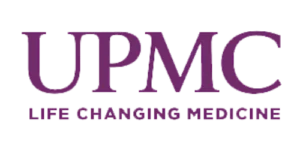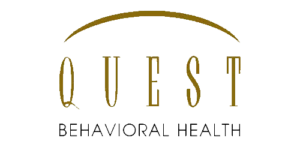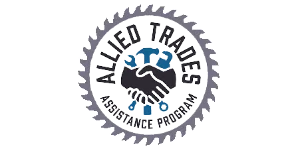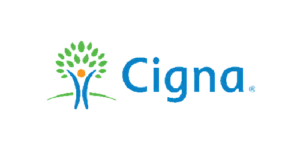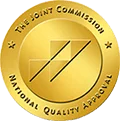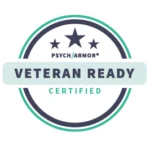If you have ever struggled with anxiety while also battling substance use, you know how overwhelming and confusing this combination can be. Anxiety and addiction often occur together, creating what mental health professionals call a dual diagnosis. This means having both an anxiety disorder and a substance use disorder at the same time. Many people experience this challenging situation, and it can feel like you are trapped in a cycle where each condition makes the other worse.
Understanding how anxiety and addiction work together is the first step toward recovery. At Arkview, we recognize that treating both conditions simultaneously is essential for lasting healing. Our comprehensive dual diagnosis program addresses both mental health and substance use disorders in a supportive residential setting. Call us to learn more about our integrated approach to recovery.
What is anxiety and substance abuse?
Anxiety disorders involve persistent, excessive worry or fear that interferes with daily activities. Unlike normal stress, anxiety disorders create overwhelming feelings that do not go away and often get worse over time. Common anxiety disorders include generalized anxiety disorder, panic disorder, and social anxiety disorder.
Substance use disorders occur when someone continues using alcohol, drugs, or other substances despite negative consequences. This can include health problems, relationship issues, or difficulties at work or school. The person may want to stop but finds it extremely difficult to do so.
When both conditions exist together, it creates a dual diagnosis. According to the Substance Abuse and Mental Health Services Administration, approximately 9.2 million adults in the United States experienced both a mental health disorder and a substance use disorder in 2018.
Key characteristics include:
– Anxiety disorders: Ongoing worry, fear, or panic that disrupts normal life
– Substance use disorders: Continued use of alcohol or drugs despite harmful consequences
– Dual diagnosis: Having both conditions simultaneously, requiring specialized treatment
Why anxiety and drug use often occur together
The relationship between anxiety and substance use works in multiple directions. Many people with anxiety turn to alcohol or drugs to manage their uncomfortable feelings. This self-medication approach might provide temporary relief, but it often creates more problems over time.
Substances can also trigger or worsen anxiety. When drugs or alcohol wear off, withdrawal symptoms frequently include increased anxiety, restlessness, and panic. This creates a cycle where the person uses more substances to escape the anxiety, which then leads to more withdrawal and more anxiety.
Brain chemistry plays a significant role in this connection. Both anxiety disorders and substance use disorders affect similar neurotransmitter systems in the brain. Changes from repeated substance use can make the brain more prone to anxiety, while chronic anxiety can make someone more vulnerable to addiction.
Common patterns include:
– Self-medication: Using substances to cope with anxiety symptoms
– Withdrawal anxiety: Experiencing panic or worry when substances wear off
– Shared risk factors: Genetics, trauma, or stress that increase risk for both conditions
Understanding dual diagnosis and its challenges
Dual diagnosis presents unique challenges because the two conditions constantly influence each other. When anxiety increases, the urge to use substances often grows stronger. When someone uses substances, their anxiety typically gets worse during withdrawal or comedown periods.
This creates what experts call a “mutual maintenance” pattern. Each condition feeds the other, making recovery more complex than treating either condition alone. Someone might successfully stop using substances but still struggle with untreated anxiety, leading to relapse. Similarly, managing anxiety without addressing substance use often proves ineffective.
Diagnosis can be particularly tricky because substance withdrawal often mimics anxiety symptoms. Sweating, rapid heartbeat, restlessness, and panic can occur both during anxiety episodes and when coming off drugs or alcohol. Mental health professionals typically wait until withdrawal symptoms subside before making a definitive anxiety disorder diagnosis.
The timing varies by substance:
– Alcohol: Usually requires 1-2 weeks of sobriety for accurate assessment
– Stimulants: May need 2-4 weeks without use
– Benzodiazepines: Can require several weeks due to long-lasting effects
Common symptoms of anxiety and substance abuse

Physical symptoms often overlap between anxiety disorders and substance use disorders, making it difficult to determine which condition is causing specific problems. Anxiety typically produces rapid heartbeat, sweating, trembling, shortness of breath, and muscle tension. Substance use can cause similar physical effects, especially during withdrawal.
Psychological symptoms also intersect significantly. Both conditions can cause difficulty concentrating, irritability, restlessness, and sleep problems. However, substance use adds specific symptoms like cravings, continued use despite consequences, and loss of control over consumption.
Warning signs to watch for include:
– Physical: Unexplained changes in heart rate, breathing, or coordination
– Behavioral: Avoiding social situations, secretive behavior, or neglecting responsibilities
– Emotional: Intense mood swings, persistent worry, or using substances to cope with feelings
– Cognitive: Memory problems, difficulty making decisions, or obsessive thoughts about substances
The combination often intensifies symptoms from both conditions. Anxiety may feel more severe when complicated by substance use, while cravings and withdrawal can become more intense when anxiety is present.
Treatment options for anxiety and addiction
Integrated treatment addresses both anxiety and addiction simultaneously rather than treating them as separate problems. This approach recognizes that conditions influence one another and require coordinated care for optimal outcomes.
Cognitive-behavioral therapy (CBT) helps people identify thought patterns and behaviors that contribute to both anxiety and substance use. In CBT, you learn to recognize triggers, develop coping strategies, and practice new responses to challenging situations. For dual diagnosis, CBT focuses on breaking the cycle between anxiety and substance use.
Dialectical behavior therapy (DBT) teaches specific skills for managing intense emotions without turning to substances. DBT includes mindfulness techniques, distress tolerance skills, and strategies for improving relationships. These tools can be particularly helpful when anxiety feels overwhelming.
Medication management is critical when treating both conditions. Some anxiety medications have addiction potential, so doctors typically choose non-addictive options like certain antidepressants. Medications for substance use disorders, such as naltrexone for alcohol use disorder, can be used alongside anxiety treatments.
Treatment components often include:
– Individual therapy: One-on-one sessions to address personal triggers and develop coping strategies
– Group therapy: Peer support and shared learning experiences
– Family therapy: Involving loved ones in the recovery process
– Holistic approaches: Mindfulness, exercise, and stress management techniques
Recovery journey and what to expect
Recovery from dual diagnosis typically takes time and involves multiple phases. Early recovery focuses on stabilization, managing withdrawal symptoms, and beginning to address both conditions. This phase can last several weeks to a few months, depending on individual circumstances.
The middle phase involves developing new coping skills, identifying triggers, and building a support network. People often experience ups and downs during this time as they learn to manage anxiety without substances. Setbacks are common and do not indicate treatment failure.
Long-term recovery emphasizes maintaining progress and preventing relapse. This includes ongoing therapy, support group participation, and continued attention to both anxiety and substance use triggers. Many people find that recovery is an ongoing process rather than a destination.
Realistic expectations include:
– Initial weeks: Focus on stabilization and withdrawal management
– First few months: Learning new coping skills and identifying patterns
– Ongoing: Maintaining progress through continued support and self-care
Success looks different for everyone but often includes reduced anxiety symptoms, sustained sobriety, improved relationships, and better overall functioning in daily life.
FAQs about anxiety and substance abuse
Recovery timelines vary significantly between individuals, but most people experience gradual improvement over several months to years. Active treatment often lasts 3-6 months, with ongoing support continuing much longer.
Addressing anxiety can significantly reduce the urge to self-medicate with substances. When anxiety symptoms improve through proper treatment, many people find their cravings decrease naturally.
Treating only one condition often leads to relapse because the untreated anxiety continues to trigger the desire to use substances for relief. Integrated treatment addressing both conditions simultaneously produces better long-term outcomes.
Healthcare providers typically observe symptoms during a period of sobriety, review the person’s history of anxiety before substance use began, and consider the family history of mental health conditions to make an accurate dual diagnosis.

At Arkview Behavioral Health, we understand that anxiety and addiction create complex challenges that require specialized care. Our dual diagnosis program provides integrated treatment for both conditions, using evidence-based therapies and individualized care plans. Our residential setting offers the intensive support needed during early recovery while teaching the skills necessary for long-term success. Contact us today using our secure online form to begin your journey toward comprehensive healing.







